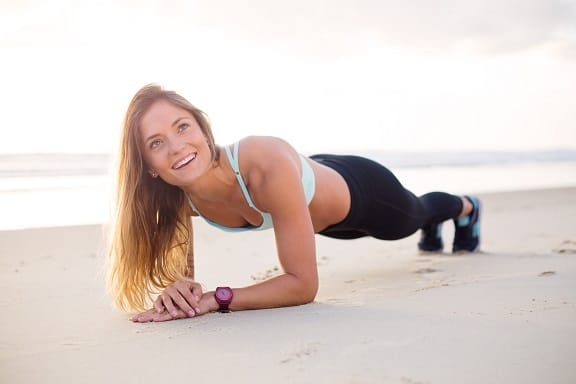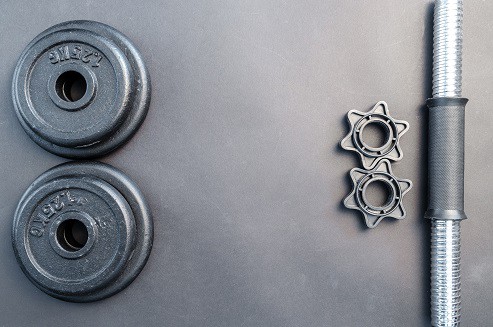
While attending a gym and training on a regular schedule is an excellent way to gain strength, fitness and extra muscle, it is also possible to achieve equally good results while never setting foot inside, or handing money over to – a gym. But doing it this way requires some supplemental thought and planning on your part.
If you want to train to enter bodybuilding or strength competitions, then you will need to sign up to a well-equipped gym in order to be competitive. However, it is well within reach to achieve a lean physique with good muscle bellies, and high levels of fitness by doing things like bodyweight exercises, outdoor cardiovascular activities such as hiking and running and improvising with weights from your environment. You can also build in training methods to your chores and tasks (remember “wax on, wax off”?).
Build in inefficiency
If you think about it, exercising is already a highly inefficient activity, at least in the short-term. If you were being as efficient as possible, you would move as little as possible and only when you absolutely needed to do so. In pre-modern human times, that’s pretty much exactly what we would be doing. Except that the meat wasn’t going to hunt itself so we would regularly have to get up and run. If a neighbouring clan decided that they were going to raid ours for resources, we would have to get up and fight.
Nowadays, many people spend their working lives sitting in an ergonomic chair and having food delivered. Of
Going to the gym solves this problem. It’s inefficient enough to lift inert weights up and down for an hour or more and run hamster-like on a treadmill. But this article is about not going to the gym and getting the gains, so how is that done?
By doing things like cycling to work when you could drive, or park further away and walk/run the rest of the distance. Here are some more examples:
- Take a backpack, do your weekly grocery shopping, carry it all home in the backpack. On your route, do some squats with the backpack still on.
- Take a walk in the park. Find a tree with a branch sticking out level that you can reach. Do pull-ups on that branch.
- When you get home and close the front door, drop down immediately and do 20 push-ups (or as many as you can).
- While you’re laying on the couch and watching television, you are in the perfect position to start doing some abdominal crunches.
The idea is to try to take the more difficult, less convenient route or way of doing things, more often. Take the stairs rather than the escalator, carry your shopping rather than use a trolley/shopping cart (obviously when it’s practical). Do leg-extensions while sitting in a chair, etc. There are many ways to build in inefficiency to your day-to-day life and doing so will keep your condition at a higher level than if you otherwise hadn’t.
ABC – Always Be Conditioning

This follows on the last points in the previous section. At any time, you can flex, tense and stretch muscles. That does not mean that you should be tense and stiff all day. Far from it. In fact, you’ll find that by frequently tensing and relaxing your various muscle groups, you will generally be more relaxed and comfortable than if you are completely static for long durations. For example, if you are seated for a long time, frequently tensing and relaxing your gluteus, hamstring and calf muscles works wonders for general comfort. You are actually toning the muscle at the same time.
It might take some learning and practice in order to be able to flex muscles in isolation of each other. Looking at an anatomy chart really helps. For example, check where the spinal erectors are, then you just have to feel in your body how you might tense and relax those muscles. You may have never done that consciously before, so in many cases, it will take some practice.
This is generally something to keep in mind while sitting or standing still. If you are on the move, walking or running, then you are already conditioning. Standing in line, you can do some flexing. If you drop a pen (or a coin or anything) you can stretch your hamstrings as you bend down to pick it up. You can tense your arms and upper body muscles at any time.
Walk the fitness on
This is a phrase that comes from the world of horse racing and other equine disciplines. At the beginning of the training season, after they have had a break over the winter, they bring them back into condition by going for long walks. No hard galloping for several weeks until they are gradually brought up to speed.
This works equally as well for humans. Walking is one of the best forms of exercise that you can do and you do not need any equipment with which to do it. It’s completely free and you are free when you are out walking in nature. Free exercise coupled with free-dom. What could be better?
Home equipment

If you don’t want to go to the gym, let the gym come to you. If you’re wealthy enough you can build your own fully equipped home gym. If you’re savvy then you’ll realize that such extravagance is unnecessary. You can do very well at home with a couple of dumbells and a doorframe chin-up bar.
You can use the dumbells to perform lateral raises for the deltoid muscles, bicep curls, tricep raises. You can hold them while you do squats or calf raises. They really are versatile.
With the doorframe chin-up bar, you can train your lats with wide grip chin-ups, biceps with inverted grip pull-ups, do hanging leg raises for your abdominals and even hang upside-down like Batman if you like.
Another useful piece of equipment that every home has is …(dramatic pause)… the floor. Useful for standing on when you do your squats. Nice and level for your push-ups, stretching and crunches. You might want to lay a yoga mat down too.
Breathing exercises
Breathing is kind of important. Fortunately we have a brain stem, specifically the medulla, that controls our breathing so that we don’t have to think about it. The cool thing is that we can consciously take over breathing at any time we choose.
Learning to breathe in a controlled manner can bring performance benefits during exercise. Breathe from the diaphragm, filling the entire lung. You will recover more quickly from periods of intensity when you are in oxygen debt. If you’ve ever watched competitive weight lifting, you may have noticed how the competitors huff and puff before, during and after lifting the weight.
Deep breathing before an event can ensure that your muscles are fully oxygenated and that some carbon dioxide is removed from your system which creates an alkaline buffer in your bloodstream. In theory, lactic acid should take longer to build up to uncomfortable levels.
Conclusion
There are countless ways to exercise and maintain fitness and strength outside of a gym. One of the benefits of a gym is that you just show up and slot yourself into a routine based on the available equipment. Outside of the gym, you have to use your creative faculties a lot more. You also have to self-motivate a lot harder because once you are at the gym, you can at least go through the motions once you are there. If your gym is the local park and it’s pouring with rain that day, it’s not as easy. You could still do indoor activities, you would just have to add that extra step of creativity.
Lastly, let’s not forget that there are many outdoor sports that add to fitness. Surfing, cycling, rock climbing, hiking, skateboarding, running, and more.
Get out and do as many as you can!